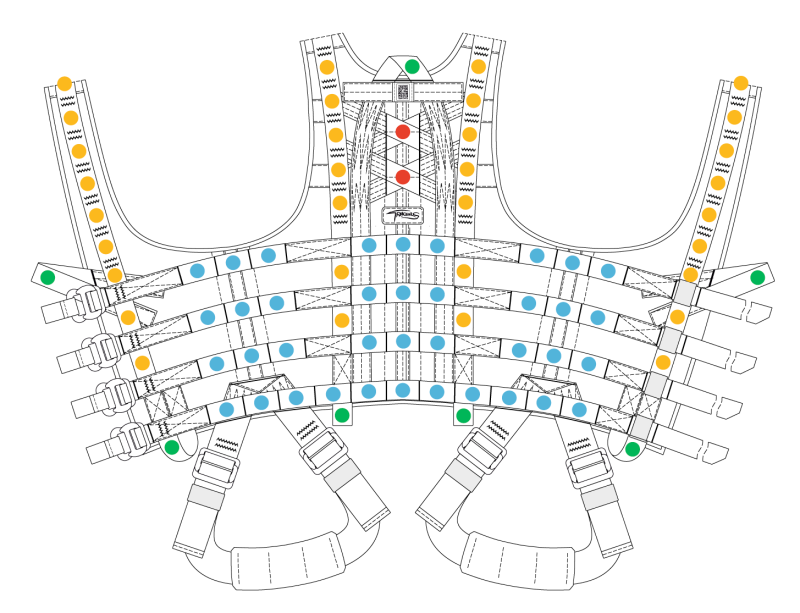Stunt harness testing method
To test our harnesses we created method where we describe how harnesses should be tested and what demands are made. This method is not a part of the standard but the results we achieve we compare with the requirements to margin of safety stated in EN 17206 and ANSI E1.43.
On the drawing above you can see that all attachment points of the stunt vest are divided into 4 groups.
- Loop (green on the drawing above) – load applied in the direction of the loop;
- Point on horizontal row (blue) – load applied perpendicular to the plane of the vest;
- Point on vertical row (orange) – load applied perpendicular to the plane of the vest;
- Cross (red) – load applied downward, upward and perpendicular to the plane of the vest.
During the test we apply 18kN load to various points. MBS of each point according to EN 17206 should be at least 14 times mass of the performer.
Here are basic specs on Tracers stunt harnesses (for detailed manual and certificate scan QR code on certain Tracers product):
Kids stunt harnesses
Max mass of the performer: 50 kg
MBS: 12 kN
Womens and mens stunt harnesses (sizes XS – L):
Max mass of the performer: 100 kg
MBS: 15 kN
Womens and mens stunt harnesses (sizes XL+):
Max mass of the performer: 130 kg
MBS: 18.5 kN
For static load tension tests we use:
- test bench for static load;
- tower for drop tests;
- gym with anchor points for specific stunt tests;
- connectors (steel shackles, Dyneema soft shackles, carabiners) with WLL of 2000 kg;
- full body dummy (EN264);
- custom dummy for unusual loads;
- wired and wireless tension sensors;
- Riglab.xyz software for video recording and building charts.
- Standards
- Testing methods
-



